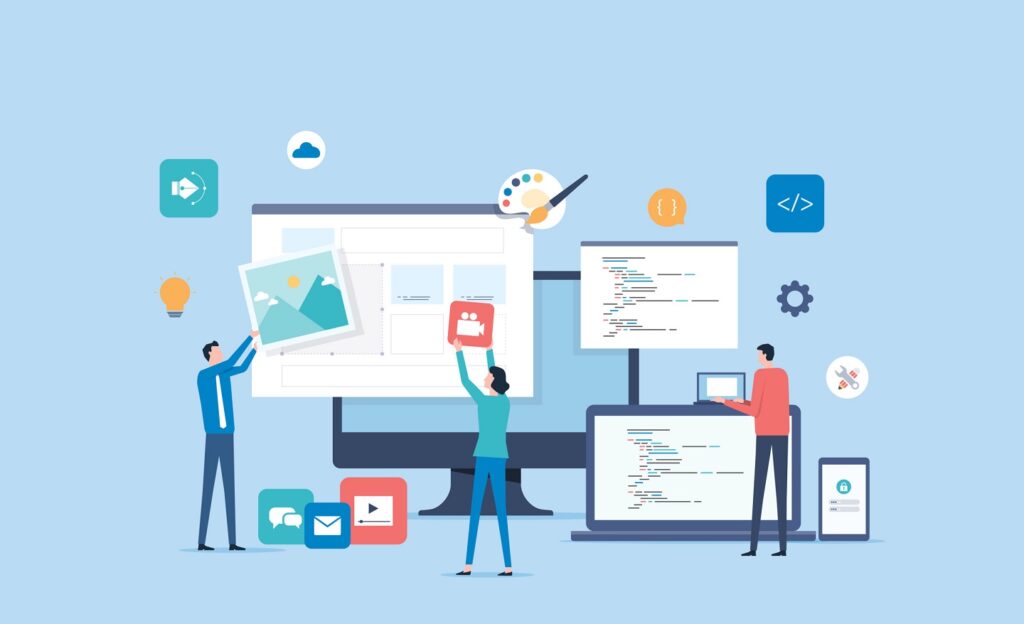In today’s fast-paced business landscape, organizations are under immense pressure to achieve more with less. Manual processes, while familiar, often slow down operations, introduce errors, and make scalability challenging. Teams spend hours managing repetitive tasks, leaving little room for innovation or strategic work.
The cost of clinging to outdated processes is high. Businesses risk falling behind competitors who are leveraging automation and innovative tools. Employees may feel overworked and demotivated due to the burden of repetitive tasks, and customers may suffer from delayed responses or inconsistent service. The question arises—how can businesses streamline workflows, improve efficiency, and scale operations without the need for extensive technical expertise?
Low code and no code workflow platforms offer the perfect solution to power your business operations. These platforms enable organizations to build workflow applications with minimal coding or none at all. By simplifying automation, they empower teams to create and manage workflows that adapt to their unique needs, driving efficiency and agility.
The Basics of Low Code/No Code Platforms
What Are Low Code/No Code Platforms?
Low code and no code platforms are tools that allow users to create software applications without requiring extensive programming knowledge. Using visual interfaces and drag-and-drop functionality, users can design workflows, automate processes, and develop applications tailored to their business needs.
How Low Code/No Code Platforms Power Your Business
1. Streamlining Workflow Applications with Ease
Low code/no code platforms enable businesses to create powerful workflow systems without writing extensive lines of code. From task assignments to approval processes, these tools allow teams to design, test, and deploy workflows that enhance operational efficiency. For example, automating invoice approvals or leave requests ensures faster processing and minimizes bottlenecks.
2. Empowering Non-Technical Teams
One of the greatest advantages of a no code workflow platform is its accessibility. Non-technical employees can easily use these platforms to build workflows that meet their specific needs. This democratizes innovation within the organization, allowing teams to solve problems and adapt processes in real time without relying on IT.
3. Enhancing Scalability and Flexibility
As businesses grow, their processes become more complex. Low code/no code platforms offer scalability, enabling organizations to modify workflows quickly as their needs evolve. Whether expanding into new markets or handling increased customer demands, these platforms ensure your processes remain agile and efficient.
4. Reducing Development Time and Costs
Traditional application development can be time-consuming and costly, often requiring specialized developers. By contrast, low code/no code platforms significantly reduce development time and costs, allowing businesses to allocate resources to other strategic areas.
Key Benefits of Using Workflow Applications on No Code Platforms
Increased Productivity
Automating repetitive tasks frees up employees to focus on high-value activities. For example, a sales team can concentrate on closing deals instead of manually tracking leads.
Improved Collaboration
Workflow applications streamline communication by integrating tools and teams. Notifications, reminders, and task updates ensure everyone stays on the same page, boosting collaboration across departments.
Faster Decision-Making
Automated workflows provide real-time data and insights, enabling faster and more informed decisions. Dashboards and reports generated by no code platforms make it easy to track performance and identify areas for improvement.
Enhanced Customer Experience
With automated workflows, businesses can respond to customer inquiries faster, resolve issues promptly, and deliver consistent service, improving overall customer satisfaction.
Real-World Examples of Low Code/No Code Workflow Platforms in Action
Automating HR Processes
HR teams can use a no code workflow platform to automate processes like onboarding, performance reviews, and leave management. This ensures a seamless experience for employees while reducing administrative overhead.
Streamlining Procurement
Procurement teams can create workflows for purchase approvals, vendor management, and invoice processing. Automating these workflows eliminates delays, improves accuracy, and enhances supplier relationships.
Optimizing Sales Pipelines
Sales teams can design workflows to track leads, send automated follow-ups, and manage deal stages. This boosts productivity and ensures that no opportunity falls through the cracks.
Simplifying IT Operations
IT departments can use workflow applications to handle ticketing systems, change management, and system monitoring. Automation ensures faster issue resolution and minimizes downtime.
How to Choose the Right No Code Workflow Platform
1. Evaluate Ease of Use
Look for platforms with intuitive interfaces and drag-and-drop features that are easy for non-technical users to navigate.
2. Assess Integration Capabilities
Ensure the platform can integrate with your existing tools and software to create a seamless workflow ecosystem.
3. Check Scalability
Select a platform that can scale with your business, offering flexibility to accommodate future growth and process changes.
4. Prioritize Security
Choose a platform with robust security features to protect sensitive business data and comply with regulations.
The Future of Workflow Automation with Low Code/No Code Platforms
As technology advances, low code/no code platforms will continue to revolutionize how businesses operate. Artificial intelligence and machine learning will likely be integrated into these platforms, enabling even smarter and more efficient workflows. Organizations that adopt these tools early will gain a competitive edge, positioning themselves as leaders in their industries.
Final Thoughts: Unlock Your Business Potential with Automation
Low code and no code platforms are no longer just “nice-to-have” tools—they are essential for businesses looking to thrive in the modern digital landscape. By leveraging these platforms, companies can transform their operations, empower employees, and deliver exceptional customer experiences.
Embrace the power of workflow applications and a no code workflow platform to unlock your business’s full potential. The time to automate and innovate is now.
